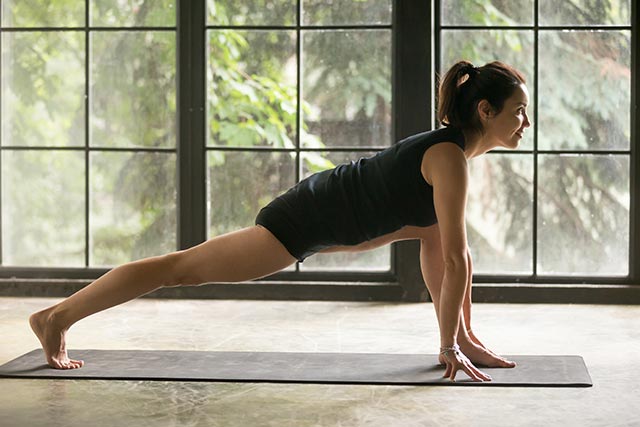 Parler
Parler Gab
Gab
- Isometric training lowers blood pressure twice as effectively as aerobic exercise — proven by a landmark meta-analysis.
- Static holds trigger a vascular rebound effect: When muscles clench, blood flow constricts, but upon release, vessels dilate dramatically, flushing the system and sustaining lower blood pressure.
- Isometric exercises are included in yoga routines, with some classes practicing the vascular rebound effect coupled with deep breathing exercises.
- According to the studies, just 12 minutes, 3x per week of isometric exercises yields measurable results — far less time than the endless cardio treadmill.
- Wall sits and planks can literally outperform hypertension drugs, offering big pharma-free relief with zero side effects.
The blood pressure revolution
For decades, physicians advised 150 minutes of cardio weekly, despite mounting evidence that jogging and cycling provided half the blood pressure benefits of isometrics. The 2023 study dismantled this dogma, ranking wall squats as the #1 exercise for systolic reduction (98.3% effectiveness). In contrast, running—long hailed as the heart-health panacea—scored just 39.4%. Dr. Jamie O’Driscoll, co-author of the study, sums it up: "Isometric exercise isn’t just effective—it’s the most effective training mode for reducing resting blood pressure." The secret? Isometrics force muscles to contract against immovable resistance, creating micro-stressors that train blood vessels to relax. Unlike isotonic movements (e.g., bicep curls), which maintain steady blood flow, isometrics starve muscles temporarily, triggering a post-exercise flood of oxygen-rich blood that resets vascular tension.10 At-Home Isometric Exercises
- Wall Sit – Back flat against a wall, knees bent at 90°, hold until failure.
- Plank – Forearms on the ground, core engaged, body straight.
- Hand Grip – Squeeze a stress ball or dynamometer 5x 45-second bursts.
- Glute Bridge Hold – Hips lifted, squeeze glutes statically for 60 seconds.
- Overhead Press Against Wall – Push palms upward into an unyielding surface.
- Calf Raise Hold – Balance on toes, pause at the peak for 30 seconds.
- Chair Pose – Mimic sitting in an invisible chair, thighs parallel to the floor.
- Doorway Row – Pull elbows back against a doorframe without moving.
- Towel Pull – Wrap a towel around a pole and yank without budging it.
- Abdominal Vacuums – Suck in the stomach and hold, engaging deep core muscles.
Frank K. Wood examines a new path to better health with “Natural Remedies and Gentle Medicines”
By Kevin Hughes // Share
Curcumin eases post-workout muscle soreness
By News Editors // Share
Chicken soup proven to cut cold duration by 2.5 days: Science validates grandma’s wisdom
By Willow Tohi // Share
Watermelon: A hydrating and nutritious superfruit
By Laura Harris // Share
Governments continue to obscure COVID-19 vaccine data amid rising concerns over excess deaths
By patricklewis // Share
Tech giant Microsoft backs EXTINCTION with its support of carbon capture programs
By ramontomeydw // Share
Germany to resume arms exports to Israel despite repeated ceasefire violations
By isabelle // Share










